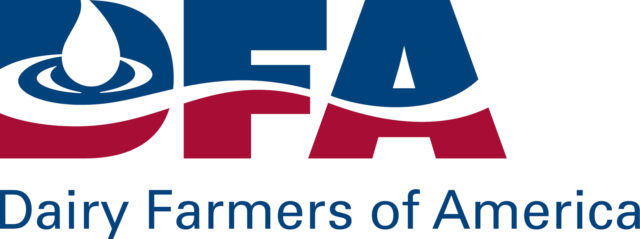Soil health is in the news. My agency, NRCS, is investing significant resources in soil health. I am pleased.The term soil health has multiple meanings, but we all can agree the term is rooted in the systems approach of managing soils.
For decades, we reduced soils into three descriptive categories: physical, chemical and biological properties.
Physical properties include soil texture and moist bulk density. Chemical properties include nutrient fertility and pooling behavior. Biological properties include the vast number and type of living organisms in the soil and the relative status of organic matter amount and turnover.
Soil health combines these into one category because there is much crossover and integration of these three properties, especially as they relate to weather, rainfall, irrigation, farming practices and crop type. My domain of soil physics is in play here too: The flow of water from soils into plants and evaporated into the atmosphere is part of the continuum that is significantly influenced by soil health.

The relative status of water in the root zone is positively correlated with texture, with soil chemistry (think sodium or salt content) and the changes in organic matter content, which influences water-holding capacity.
I just visited our New York NRCS Big Flats plant material site. A cover crop workshop was well attended by about 140 people, the majority of them farmers learning from other farmers the practical side of cover crops.
The highlight of the day was a farmer panel of four landowners from across the state, all operating very different kinds of farms with the common practice of keeping the field surface covered with plant growth and residue.
I made my first visit to Cornell University about three weeks ago at the time of this writing, visiting the soil health laboratory in Bradfield Hall. There I met the lab coordinator, Dr. Bob Schindelbeck.
We had a great conversation about the equipment and laboratory procedures, how the analytical data are interpreted, and importantly, why this service is offered to landowners here in the northeast part of the country. The lab’s website is soilhealth.cals.cornell.edu.
I visited with two other scientists, Dr. Daniel Moebius-Clune and Dr. Harold van Es. The research project coordinator, Dr. Bianca Moebius-Clune, has just taken a new position with NRCS in Washington D.C., heading up our soil health division. A superb choice.
About 10 years ago, while at Michigan NRCS, I was fortunate enough to attend a national agronomy meeting in Nebraska City, Nebraska. The final day of the week-long conference was a field day sponsored by the University of Nebraska – Lincoln. We were introduced to van Es at his demonstration site.
There, he showed us the Cornell Sprinkle Infiltrometer, a simple device that mimics rainfall on soils so the user can understand the runoff potential, the movement of water in both unsaturated and saturated field conditions, and therefore evaluate field soils from direct measurements.
If I were tasked with teaching the fundamentals of the Unity Equation (1-A=R), which includes abstraction as interception and infiltration, and runoff (together accounting for 100 percent of the water applied to the soil surface as rainfall or irrigation), then I would select this as one of my field instruments.
Field demonstrations are profoundly useful in a group setting. We can introduce concepts and ideas and models in the classroom, but when a field instrument is available for field use, the real learning takes place.
I get the sense here that the interest in soil health is part of something larger. Climate change and the role of agriculture in this change are certainly in the news. Setting aside the discussion of the role of animals, the effort for crop and pastureland use is largely carbon sequestration.
From a systems perspective, the integration of cover crops, for instance, helps shift a surface soil to a carbon sink from a carbon source and has huge environmental benefits. The cover crop workshop at Big Flats addressed these important topics in depth.
The topic of animal manure applications can be included with this discussion. The applicator must decide if today, or any day, is a store in a waste storage facility day or if an application can be made on a crop or pasture field.
The essence of the decision is knowing the soil moisture status of the receiving surface soils so A (abstraction) is maximized and R (runoff) is minimized. Knowing the relative moisture content of the void space coupled together with the available water-holding capacity is required.
Soil health is involved in a major way … the relative status of organic matter in the soil, SOM, is positively correlated with the ability of the soil matrix to absorb water, thereby preventing or at least slowing not only runoff but deep leaching past the surface soils.
If this reads a lot like irrigation water management, then you are correct. The manure applicator uses the same data – timing, rate and volume – to apply the liquid manure. The objective is, of course, stabilizing the volume in the root zone and the surface soils, thereby avoiding (or minimizing) runoff or leaching.
The Cornell Sprinkle Infiltrometer has a role to play in the field examination of water flow through a porous media – soils thereby defining intake rate so an application of irrigation water or liquid manure is abstraction and not moving off the field as runoff. The device is simply one of the tools we can use to show the rate performance of an individual field, as van Es did for us in Nebraska.
I hope we continue hearing and reading about soil health in the future. It is a systems approach at managing the critical resource of our soils. And soil health has a role to play in climate change too. Shifting a soil to a sink of carbon from a source is hugely important.
Appears to me, anyway, that we already know quite a lot about soil health and the practical ways landowners can improve and enhance soil health. As I often write, the real challenge is not the science or the technical stuff; it is the human environment that includes a change in behavior by the landowner long after we leave the driveway.
The farmer panel at our workshop in Big Flats was exactly this … landowners already implementing strategies and plans to improve and enhance soil health. Now we just need to have their work made public for all those not in attendance.
This is the critical work ahead. PD
PHOTO: The Cornell Sprinkle Infiltrometer is a simple device that mimics rainfall on soils so the user can understand the movement of water in both unsaturated and saturated field conditions. Photo courtesy of Mike Gangwer.

-
Mike Gangwer
- Agricultural Scientist
- USDA-NRCS
- Email Mike Gangwer





